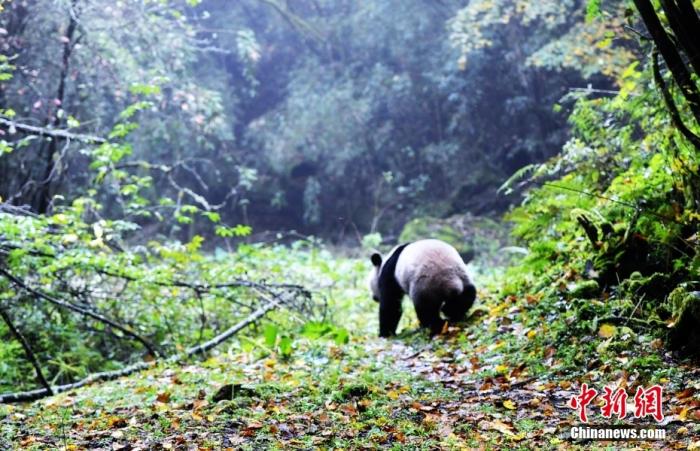Chinanews, October 13th. What is the most expensive animal in the world?
Is it a pet or an animal contestant?
Or is it a wild animal?
The British Broadcasting Corporation (BBC) reporter Richard Fisher discussed the definition of the value of animals, and pointed out that when we define the value of animals, we can expose the personality and preferences of human beings.
Data map: horse racing.
What is the most expensive animal?
When we are discussing what is the most expensive animal and how to define it, it is inevitable to mention the economic value of the animal.
According to the report, animals have always been part of the human economic circle, and people believe that there is a price difference between animals.
This can reveal the truth about human cognition.
Especially if you see the high prices people are willing to pay for animals.
At the end of 2020, a group of British farmers joined forces to buy a unique sheep for approximately RMB 3.16 million.
The buyer said, "A sheep is not worth the price," "We have to pay that money to get the genes of this breed."
But this is not the most expensive farm animal.
In 2009, a Holstein cow was bought for 1.2 million U.S. dollars (approximately 7.73 million yuan).
The price of bulls is even higher. In 2019, an Angus bull was sold for US$1.51 million (about 9.73 million RMB).
On the other hand, the price of pets can also be prohibitively high.
In the UK, the price of dogs soared during the COVID-19 pandemic, and some breeds of dogs are now priced at £3,000 (about RMB 26,825).
If you include a lifetime of dog food plus veterinary bills and other expenses, pet owners will have to pay tens of thousands of dollars.
From an income perspective, the Internet star "Grumpy Cat" may be the most valuable pet.
It is estimated that she was worth about 100 million U.S. dollars (about 600 million yuan) before her death.
However, according to the Guinness Book of World Records, the most expensive animal is the racehorse.
In 1985, a yearling named "Seattle Dancer" (Seattle Dancer) sold for 13.1 million US dollars (about 84 million yuan).
Since then, other horses have been sold at higher prices.
In 2000, "Fusaichi Pegasus" (Fusaichi Pegasus) was bought for $64 million (about 400 million yuan).
Data map: giant panda.
Photo by China News Agency reporter An Yuan
Animals whose value cannot be calculated at market prices
For wild animals, the measurement standards are quite different.
The report pointed out that in the past ten or twenty years, scientists have tried to calculate the economic value they bring to the ecosystem by evaluating the "services" provided by wild animals to humans, from the food or resources they provide to other indirect benefits. Such as carbon sequestration, pollination, entertainment and tourism.
Therefore, the total value of wildlife in the ecosystem is estimated to be as high as US$145 trillion per year.
For example, the median value of coral reefs is approximately US$200,000 per hectare per year; the value of global crop insect pollination services is estimated to be approximately US$180 to 500 billion per year.
Some people oppose the use of specific services to evaluate nature, believing that it cannot capture features that nature cannot quantify, such as the mental health provided.
Others believe that ecosystems and living things should be regarded as invaluable.
But some people believe that it can inspire people to look at natural ecosystems in a whole new way, especially those who only consider economic benefits.
So, how can this method allow us to measure the value of a particular animal?
Although most calculations look at the services provided to the ecosystem as a whole, some studies have calculated the value of specific taxonomic species.
Recently, Ralph Chami of the International Monetary Fund and his colleagues have used this "single animal" calculation method more strictly, and have carried out an assessment of the carbon capture potential of animals from now and in the future. According to specific research, the carbon capture value of each elephant is calculated to be 1.8 million US dollars (approximately 11 million yuan for the people).
The price of whales is about the same.
Chami and his colleagues believe that valuation is good for individual animals because it can encourage people to protect animals.
The value of elephants or whales can also be used to calculate fines for harm, such as fines for poachers and poaching vessels.
Although we have valued wild animals, due to the wide range of valuation methods, we do not fully know the contribution of all animals, and the relationship between animals in the ecosystem is also difficult to untie, so we look for the most "expensive" animals. , And there is no simple answer.
However, there is one animal that is likely to be at the top of the list of the most expensive animals, and it is the giant panda.
According to Guinness, it must be the most expensive zoo species, but considering its rarity, cultural value, protective investment and many other factors, its true value may be higher.

